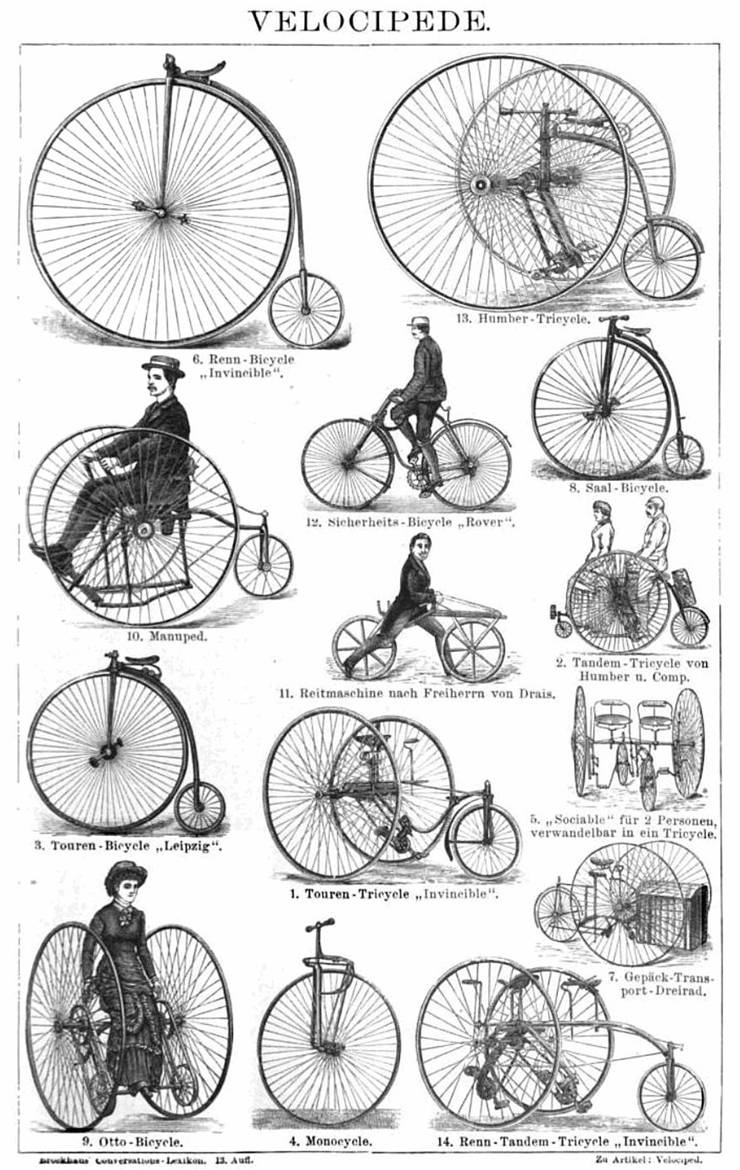Boneshaker - Velocipede Bicycle History and Facts
Velocipede is a term that describes human powered land vehicle with two or more wheels that has managed to become a synonym for the word bicycle in the early history of those travel devices. However, even though the word “velocipede” was most famously used to describe balanced bicycle designs that had pedals, the earliest appearance of the world Velocipede was tightly connected with the devices known as dandy horses, draisienne or hobby horses that were originally invented as by the German Baron Karl Drais. Dandy horse bicycles featured very simple design where users propelled themselves by manually reaching with legs to the ground where they could walk, run and then rest their legs while the force propelled simple bicycle forward.
First notable improvement upon dandy horse design arrived in 1818 by French inventor Nicéphore Niépce (best known as the father of modern photography), who mounted adjustable seating position on this early dandy horse design. He named his invention velocipede, but that name was accepted all across the Europe only around 50 years later when France became home of the first organized factory that produced first modern two-wheeled bicycle nicknamed Boneshaker that was produced by Michaux Company.
Between 1817 when Nicéphore Niépce created his first velocipede and 1880 when first “safety bicycles” became highly popular across Europe, bicycle designs were highly varied. Velocipedes created in that period came in many forms – monowheel, unicycle, bicycle, dicycle, tricycle and quadracycle. They all had pedals, but no chain drive. The most popular velocipede design of that time was two wheeled penny-farthing, which featured very big front wheel and small rear wheel. This design was popular after the introduction of chain drive-powered boneshaker, and it was a first velocipede type that was openly called “bicycle”. Penny-farthing was not popular for large period of time, but during height of its use it became a synonym of a late Victorian era and origin point of a cycling as a popular pastime and a sport.
Success of penny-farthing and French boneshaker had more lasting influence on the history of the bicycle. Its designs received numerous upgrades in the decades after they were originally unveiled, leading up to the creation of the safety bicycle in the 1880s. They featured diamond frame design, two identical wheels, use of rubber tires, pedals, and chain drive mechanism that enabled easier transfer of rotating force to the rear wheel. After introduction of safety bicycles, the age of velocipedes came to an end, except in rare situations when some three or four-wheeled designs still remained in use for industrial or railroad purposes (Draisine).
Today, velocipedes are still celebrated by several international cycling organizations, and they can be seen in public mostly at various circus shows or public events with professional entertainers.
